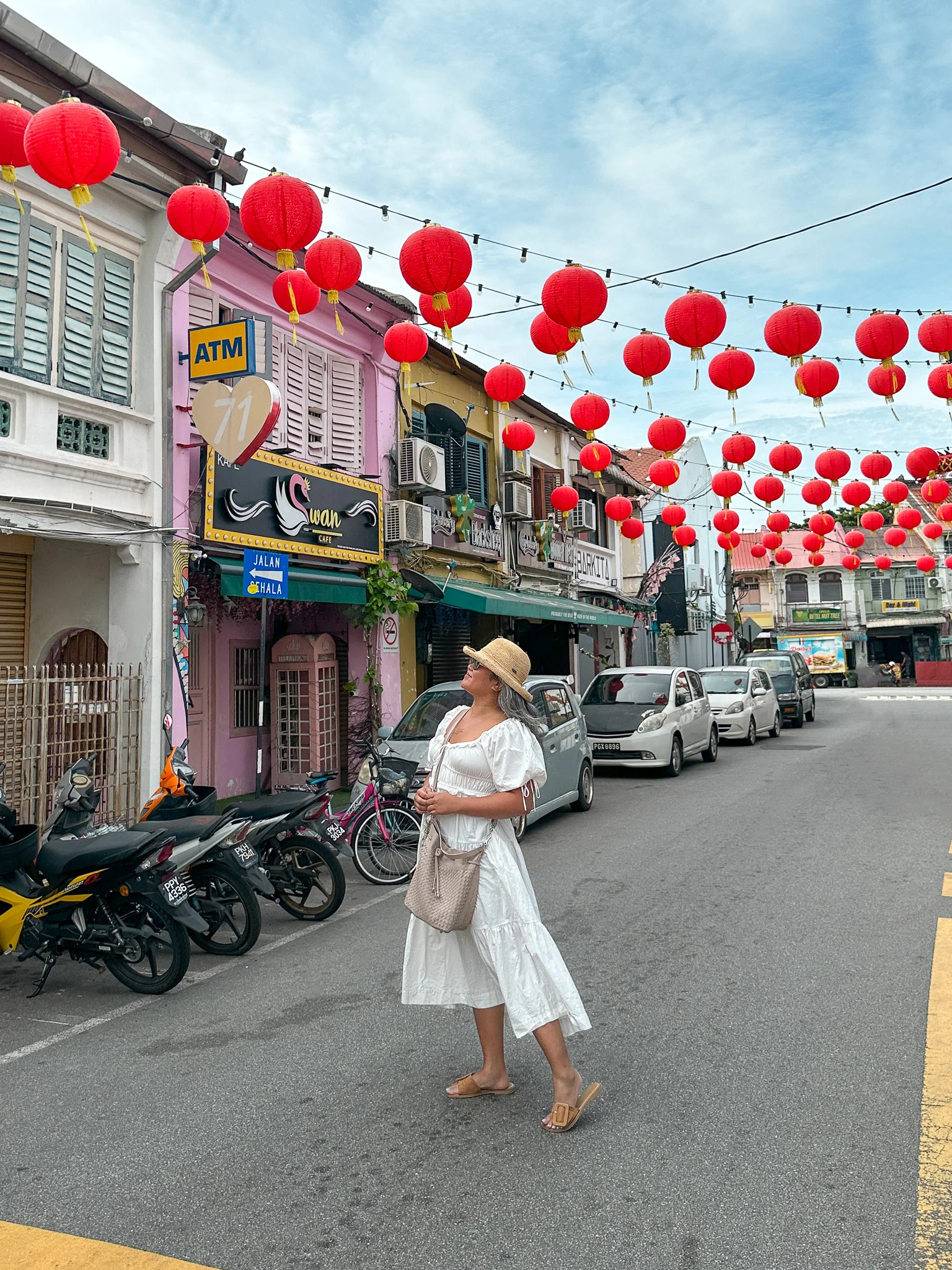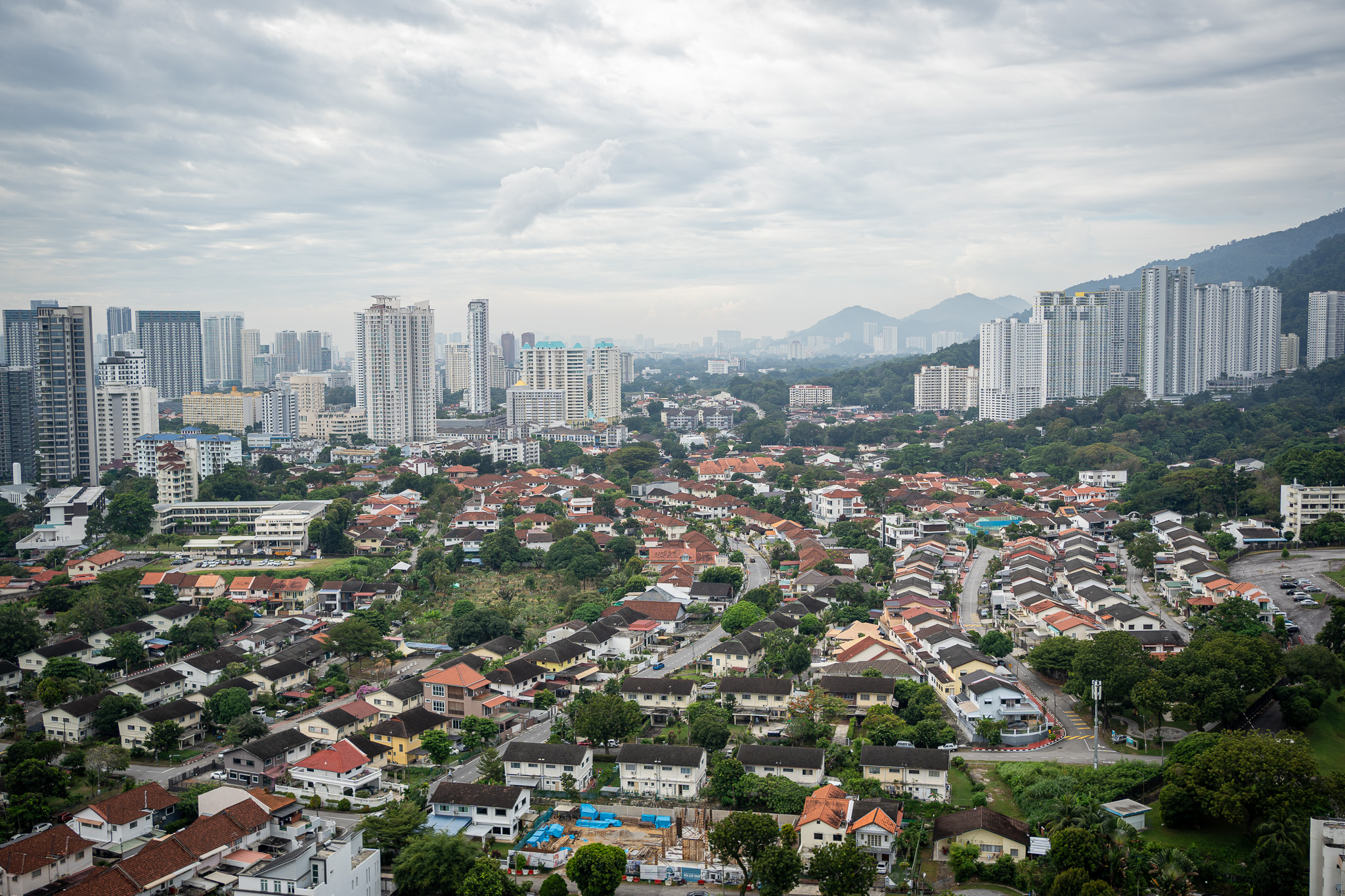
Penang is one of the most colorful destinations you could visit. It lies on the Northwest Malaysian coast. Georgetown (also spelled George Town) is a multicultural and historic capital.
The city center is a listed UNESCO World Heritage Site. It’s home to populations of immigrants from India, China, and other parts of Malaysia.
Today we’ll cover the best things to do in Georgetown as well as some tips to help you plan a successful trip.
In this guide, we’ll go over the major tourist attractions in Georgetown as well as hotel and restaurant recommendations.
The Best Time to Visit Penang
There is plenty to do in Penang year-round.
The best seasons to visit Penang are from November to January when it’s dry and cooler. February, March, and April tend to be quieter once the Lunar New Year festivities have passed.
Between May and October, it’s more humid, warmer, and rainy.
How to Get to Penang
Most visitors will travel through Kuala Lumpur to Georgetown, Penang. We recommend booking with Air Asia, Malaysia Airlines, and Scoot. There are over 20 daily flights between the Malaysian capital of Kuala Lumpur and the island.
It’s also possible to drive between cities via the North-South Highway or to take a six-hour train trip from Kuala Lumpur.
Once you are in Penang, it’s very affordable to take an Uber anywhere in the country. Make sure you check holidays because Ubers typically become unavailable due to demand.
Where to Stay in Penang
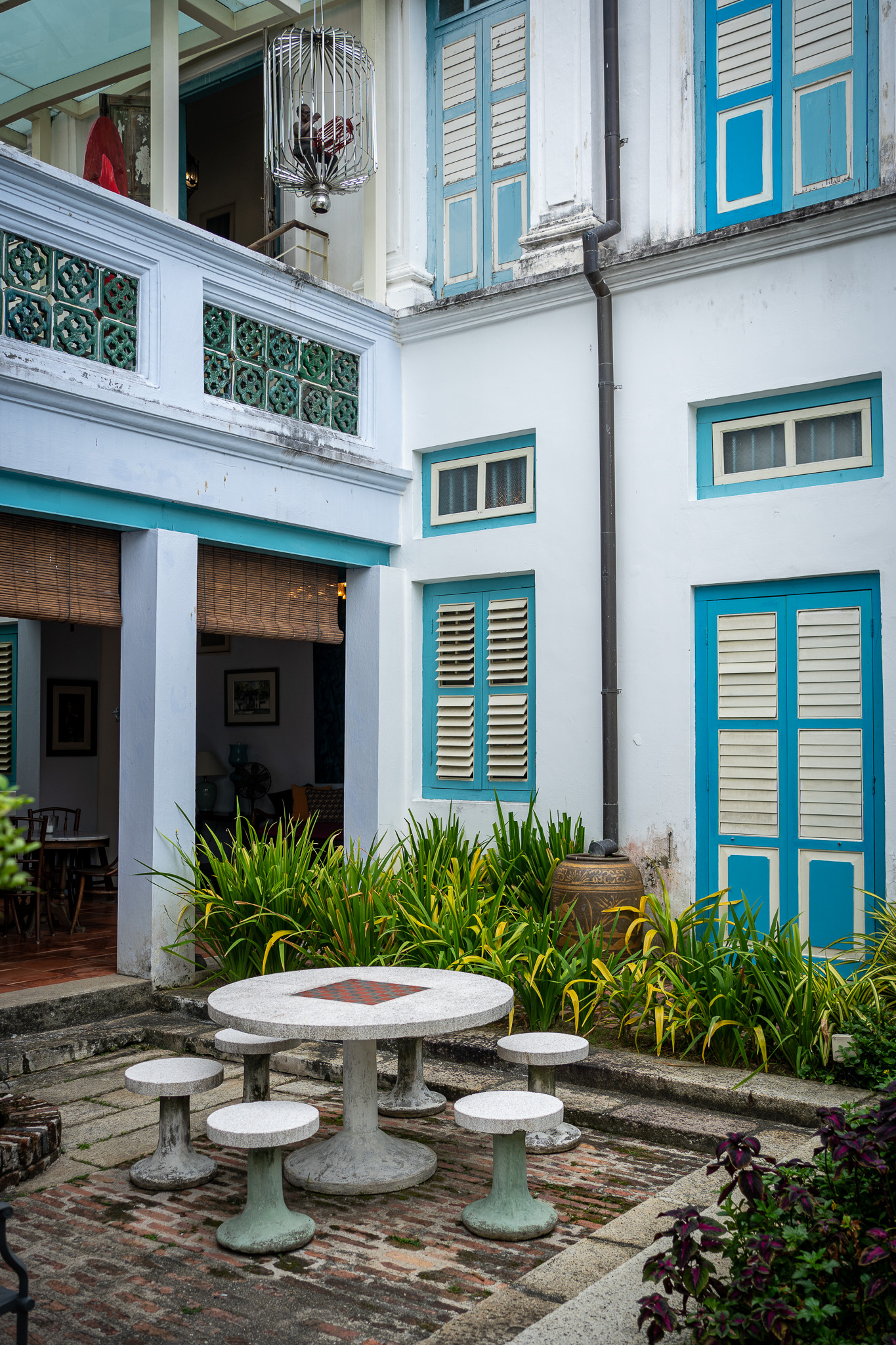
23 Love Lane Boutique Hotel
There is a wide range of accommodations in Georgetown for all budgets. Here are our top recommendations.
- 23 Love Lane Boutique Hotel – We stayed at this hotel and enjoyed how close it was to many famous eateries, street art, and street food stalls.
- Eastern and Oriental Hotel – The stunning colonial hotel has two facades; one facing Georgetown and the other overlooking the sea. This all-suite hotel was built by the Sarkies brothers who also founded the famous Raffles Hotel in Singapore. Known simply as the E&O to most, it has a series of elegant eateries and bars, where you can sample both a Singapore Sling and an E&O Sling. Stay here if you want a 5-star hotel experience in a culturally historic hotel.
- The Blue Mansion (Cheong Fat Tze) – An upscale boutique hotel that was featured in the movie, Crazy Rich Asians. There are only 38 rooms, so you’ll have to book rooms quickly as they fill up in no time. Here you’ll enjoy decorative arched windows, antique wooden floors, and ornate rugs. It’s centrally located to many eateries and attractions.
- Tanjung Point Residences – For those who want to stay for an extended time, we highly recommend Tanjung Point Residences. The apartments are made for long-term stays and have fully equipped kitchens and closet space. The building is located along the northern coastline and not too far from attractions and restaurants.
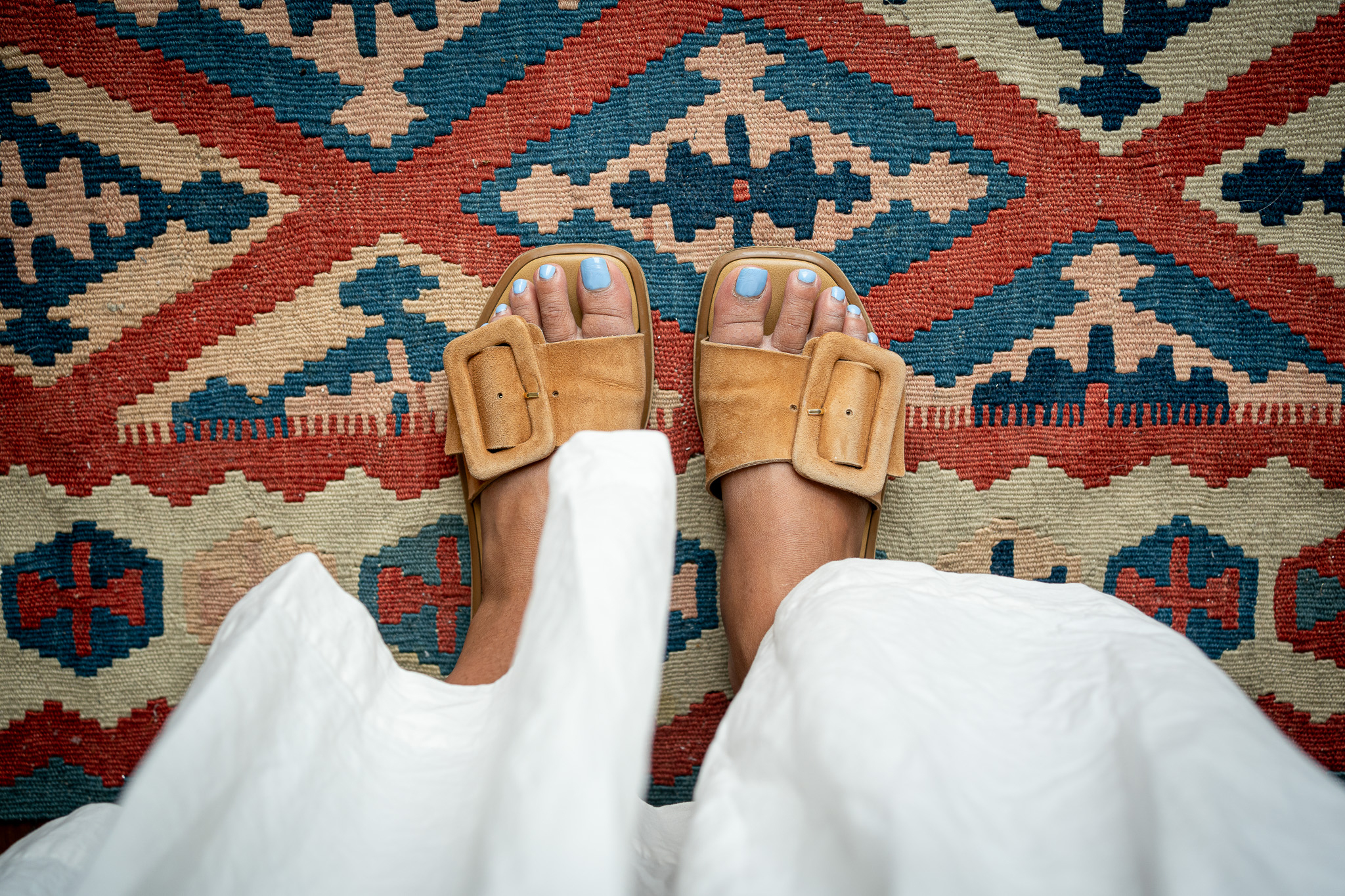
How Many Days Should I Spend in Georgetown
I’d say that around three nights, or a long weekend, is plenty of time to explore Georgetown and the surrounding monuments.
We recommend spending a day on the north side of the island enjoying beach time in Batu Ferringhi and Tanjung Bungah.
Is Georgetown Penang Safe?
Georgetown is extremely safe for all types of travelers!
The biggest travel concerns tend to be petty theft like pickpocketing or snatching. Be sure to keep your valuables close to your body or out of sight and away from thieves.
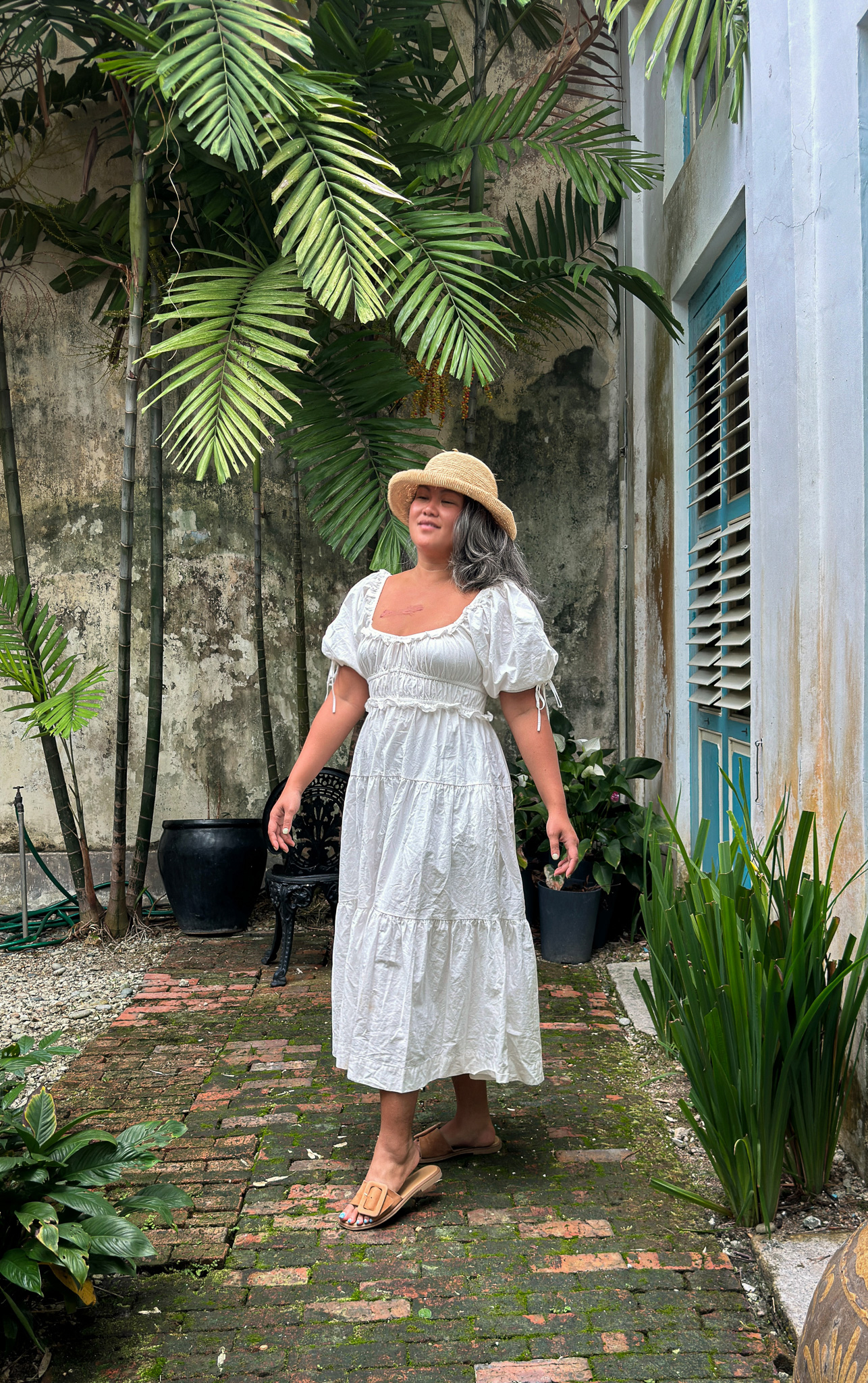
Best Things to Do in Penang Georgetown
If you’re wondering what to do in Malaysia’s Georgetown, here are our top recommendations.
From street art and street food to amazing colonial and Chinese architecture, there’s something for every traveler.
#1 Explore the Bustling Street Art
The Georgetown street art scene was planned by the local council to bring more tourism and art to the city.
They hired a London art school graduate in 2012 to revitalize the original Chinese shophouses around town.
Some notable street art that you must see include the following:
- The Little Girl In Blue – Ernest Zacharevic’s best-known piece. This appealing 20-foot figure in aqua blue pajamas can be found on Muntri Street (Google Maps).
- Brother and Sister on a Swing – A boy and girl sitting on a swing made from old bicycle tires. The mural captures a playful scene. Location: 63 Gat Lebuh Chulia (Google Maps)
- Phone Attached to Wall – A bright pink and has a phone attached to the wall. I had so much fun acting like I was making a phone call here. This is located right next to the Central Fire Station on Beach Street. You’ll also find one of the cutest streets here full of spinning flowers and lined with colorful lanterns. There are many other murals dedicated to the firemen of Malaysia down this street too. Location: Beach St, Georgetown (Google Maps)
- Folklore by The Sea – A young boy sitting on a chair with a fishing net, capturing something from the sea. An older man sits in a hammock relaxing. This mural is located in Chew Jetty. Location: 59A, Chew Jetty (Google Maps)
- I Want Bao – 2 children reaching through a window for a basket of Bao (steamed buns). This mural is located next to Ming Xiang Tai Pastry Shop. Location: 28 Gat Lebuh Armenian (Google Maps)
- Boy on a Chair – One of the most popular murals, if you’re looking for the best street art in Penang, is ‘Boy on a Chair’. This little boy is reaching up and standing on the edge of a chair. It is located right across of the window cat murals. Location: 14 Lebuh Cannon (Google Maps)
- Men Pushing a Door – Stand in front of their hands to give the illusion that they are pushing you. Just next door to this mural is Penang’s Umbrella Street. Location: Lbh Armenian (Google Maps)
- Sculpture at Work (Comic Iron Steel Rod Artworks) – These steel artworks are located throughout Georgetown and each one shares a bit of Georgetown’s history directly related to the locations they are placed in. There are 52 total installations throughout the city.
We highly recommend booking a street art tour to get the most out of Georgetown’s bustling street art culture. You can do it with a company or just ask someone offering rides on a trishaw to take you around for a few hours.
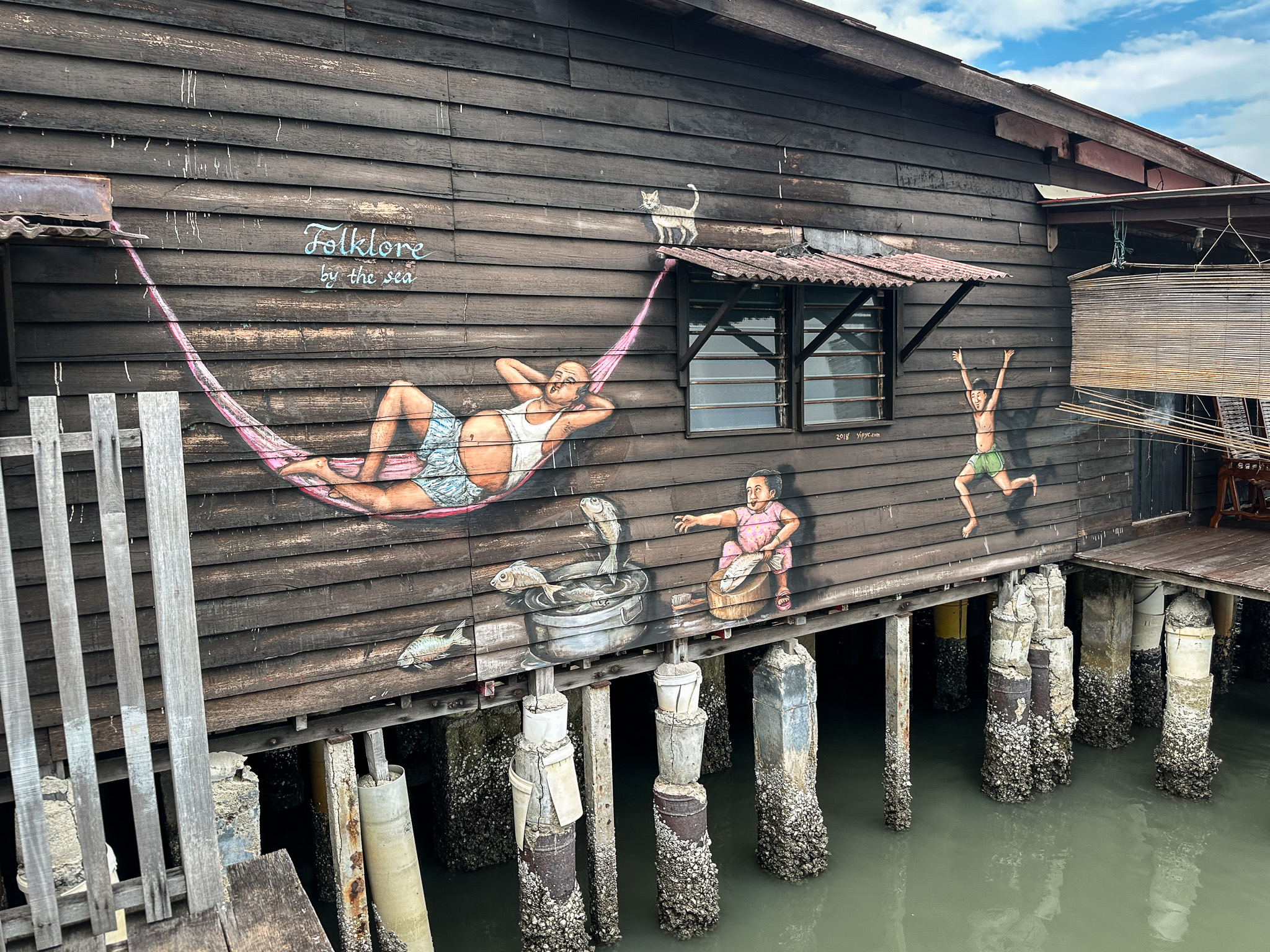
Folklore by the Sea in Chew Jetty
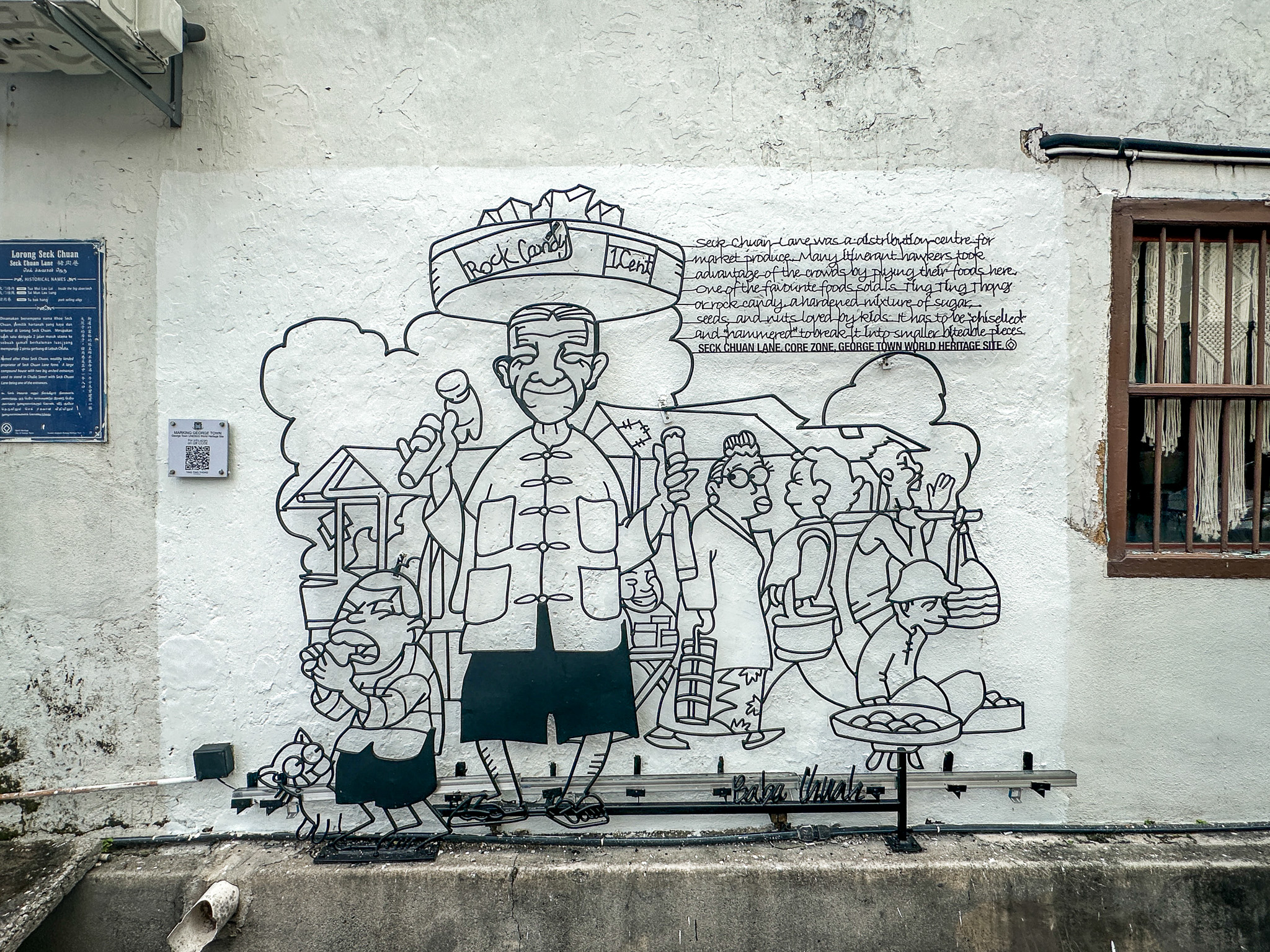
Sculpture at Work
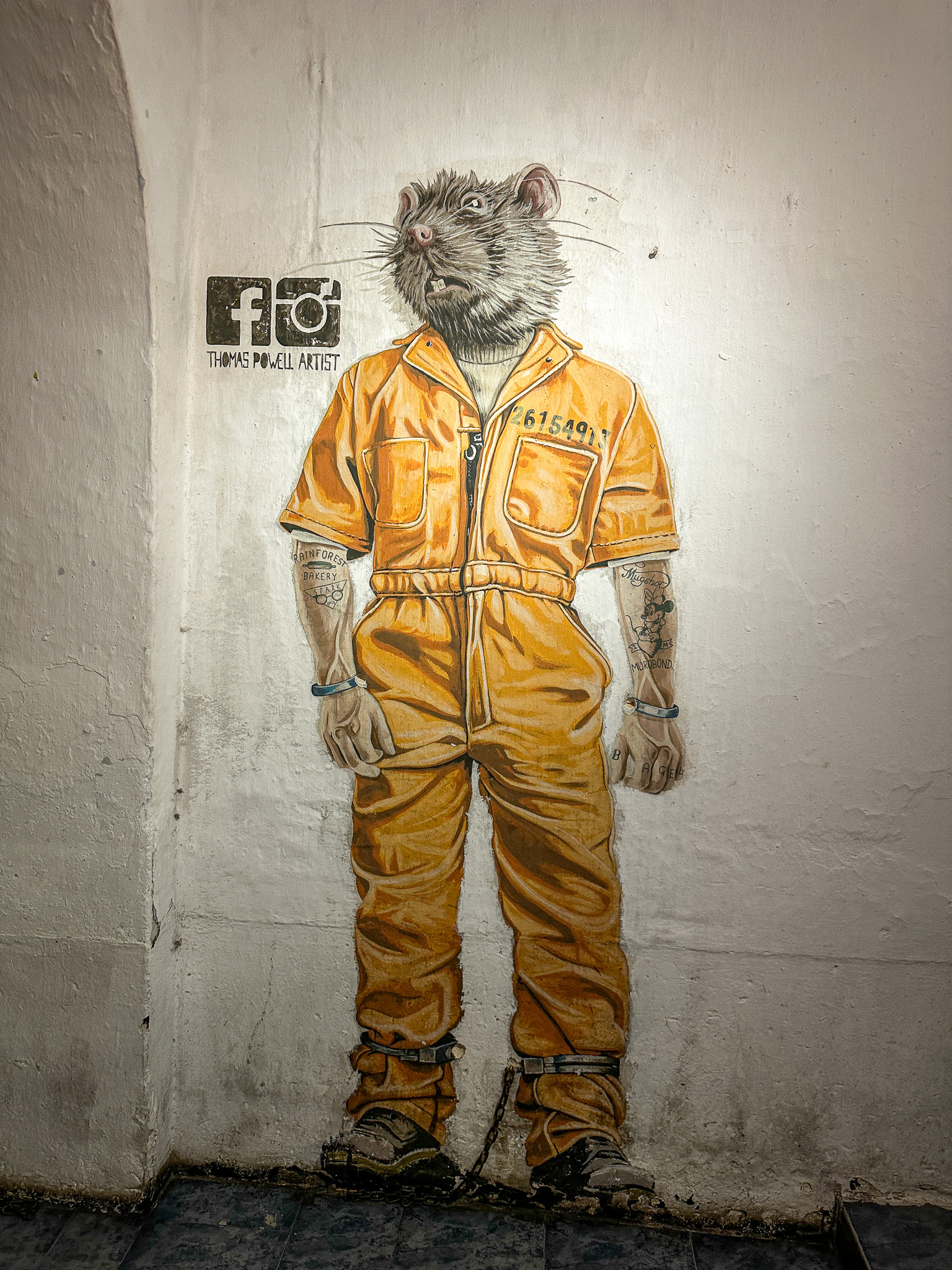
Prison Rat by Thomas Powell
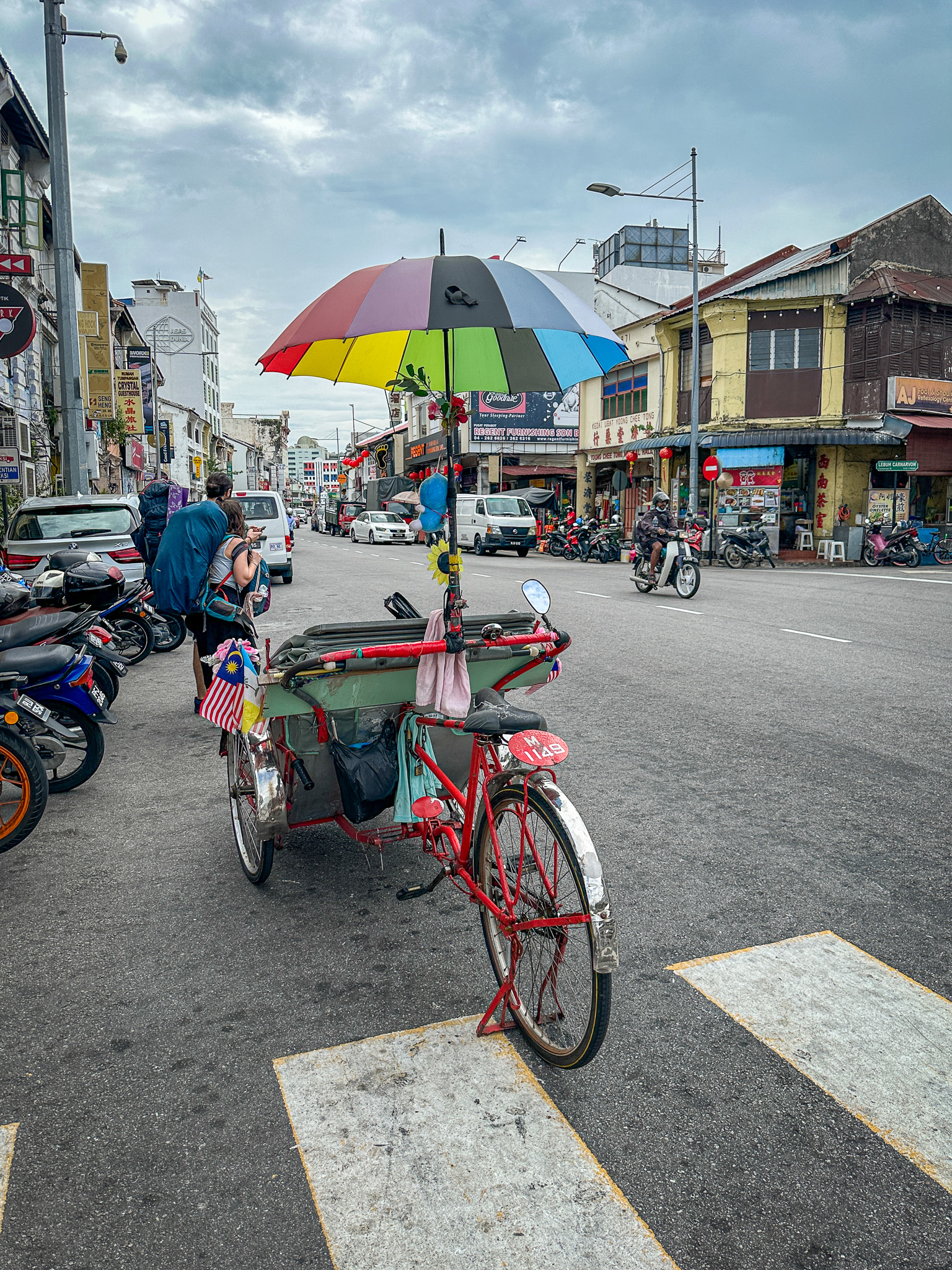
Trishaw Cycle
#2 Check Out the Street Food Scene
The street food scene in Penang is very robust! Many hawker centers are serving a variety of cuisines that are native to Penang and the countries that have blended to represent the people of Malaysia; Indian, Chinese, and Malaysis.
Here are our favorite spots to get street food in Penang:
- Cecil Street Food Market
- Penang Road Market
- Chulia Hawker Street
- The Jetty Food Court
- Little India – We had Michelin-starred samosas and they were very delicious and affordable!
- New World Park Food City
- Presgrave Street Food Court
Malaysian dishes that you have to try include the following:
- Rojak – a local salad of mixed vegetables and fruits, drizzled with a sweet and sour sauce comprising local prawn paste, sugar, and lime.
- Roti Canai – Thumbprint fried roti bread served with a bowl of curry sauce.
- Assam laksa soup – A sweet, sour, and spicy fish noodle soup that’s common in Indonesia and Malaysia. It’s made with rice noodles, a tamarind-based broth, and fresh vegetables and herbs. It’s very different from the Laksa that you would find in Singapore, where the laksa is much sweeter and coconut-tasting.
- Char kway teow – Stir-fried (char) wide rice noodles (kway teow) with egg and protein.
- Char hor fun – Cantonese-style fried flat wide rice noodles in gravy sauce with egg. Can be ordered with shrimp, chicken, or beef.
- Nasi lemak – Malaysia’s national rice dish with chicken, crunchy peanuts, cucumbers, fried anchovies, and a spicy sauce. It can be eaten any time of the day.
- Cendol – A sweet iced dessert that contains strands of pandan-flavored green rice flour jelly, coconut milk, and palm sugar syrup.
We also recommend taking a tour if you want to learn more about the food scene!
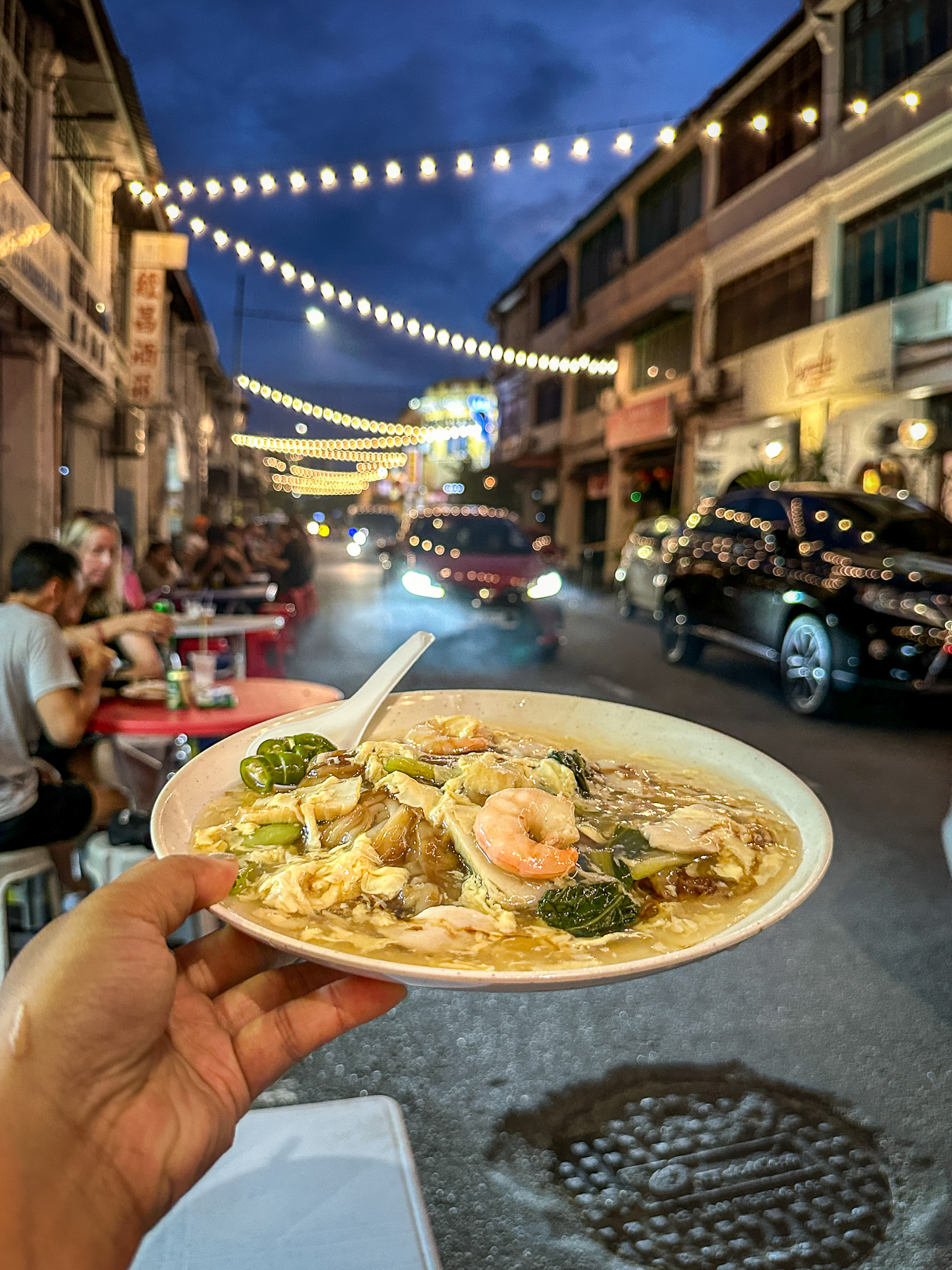
Char Hor Fun @ Chulia Hawker Street
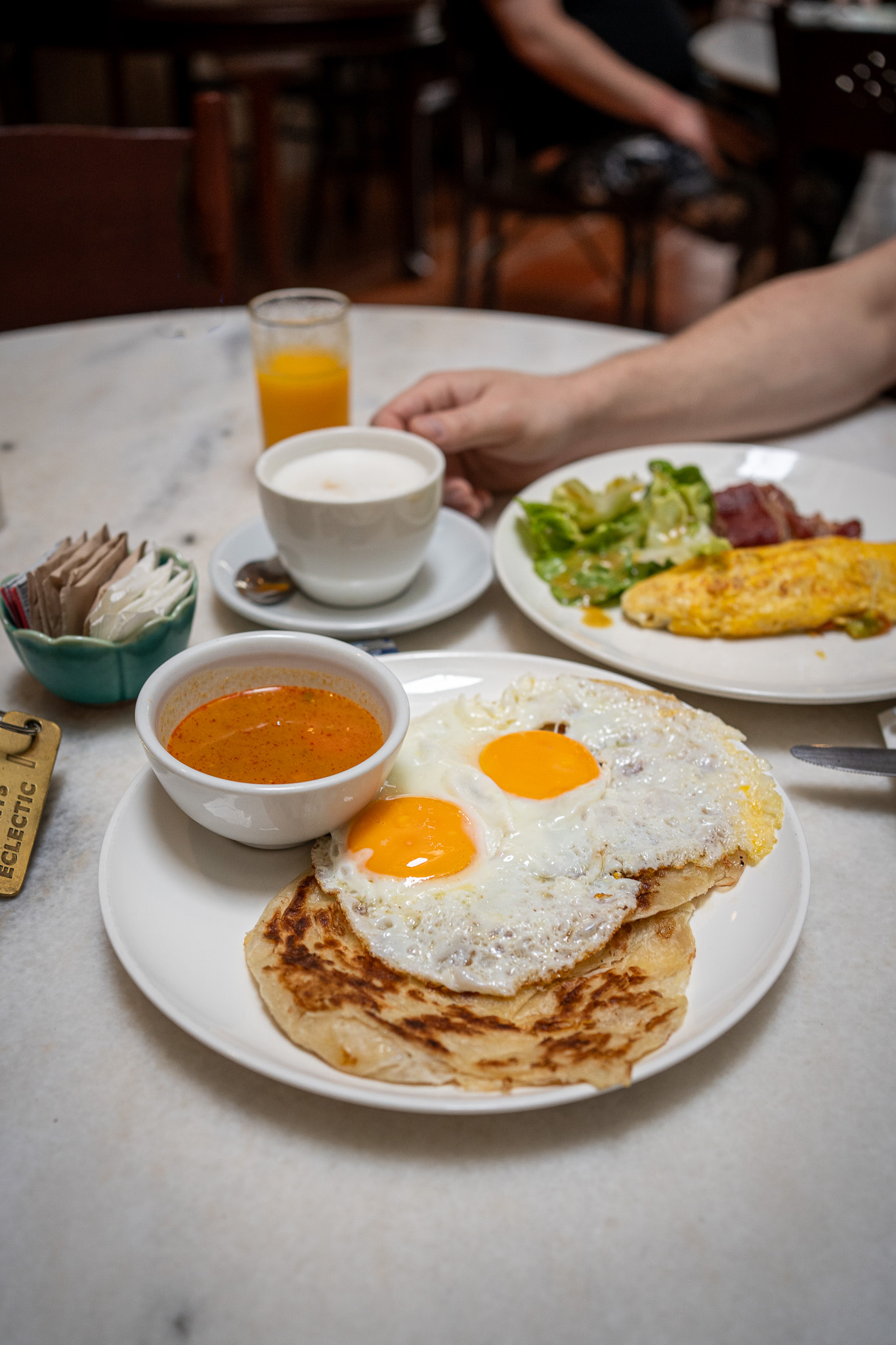
Roti Canai with a fried egg for breakfast at 23 Love Lane Hotel
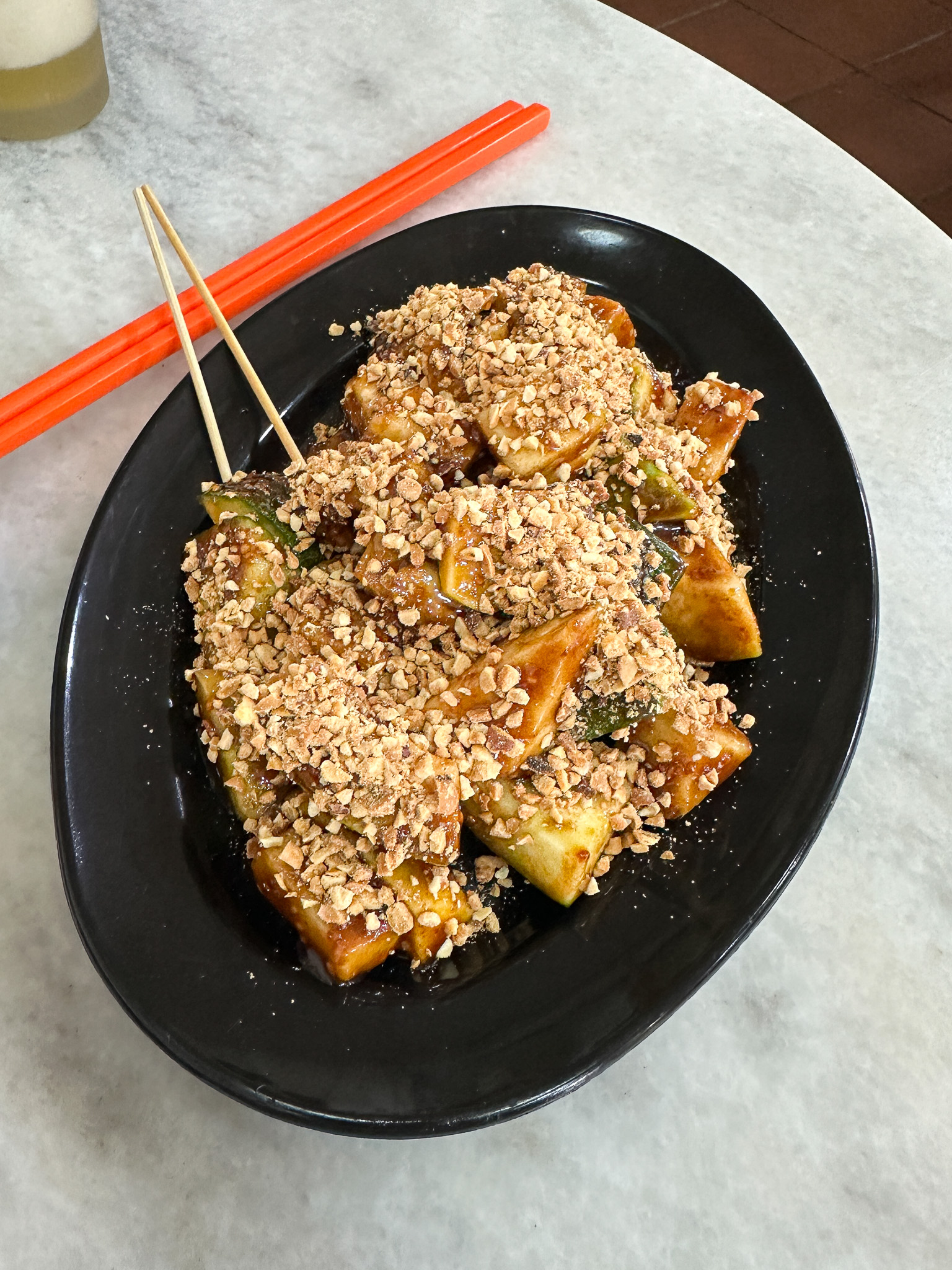
Refreshing Rojak salad from Chulia Hawker Street
#3 Visit the Blue Mansion
Officially known as Cheong Fatt Tze Mansion, this striking blue building is a must-see for those who love history and architecture.
Located on Leith Street, the mansion can also be seen while exploring the Georgetown Malaysia street art scene.
This restored heritage property was featured in the 2009 movie The Blue Mansion as well as other productions such as Crazy Rich Asians.
Visitors who tour the structure can see seven staircases and 38 rooms, plus highlights such as art nouveau style stained glass windows, courtyards paved with granite, and Chinese floor tiling.
The mansion also operates as a boutique hotel, so I’d recommend booking a stay at this charming, historic property.
We didn’t stay at the hotel, but we did get to dine at the Indigo Restaurant and try their tasting menu. It was only $80 USD with a beverage.
View this post on Instagram
#4 Kek Lok Si Temple
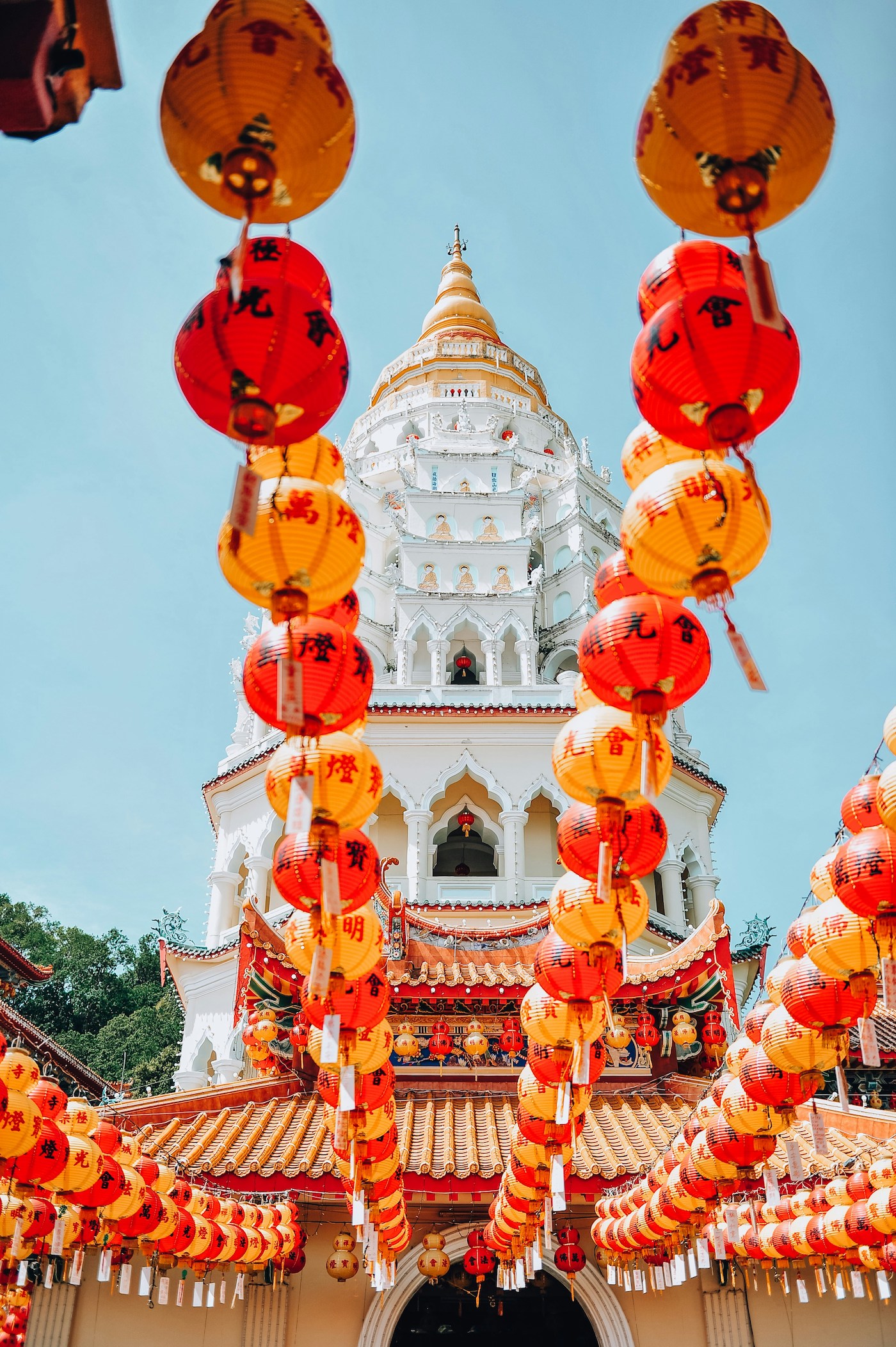
Kek Lok Si is the biggest Buddhist temple in Malaysia. It sits atop Air Itam hill and has dominated the landscape since the late 19th century.
The site is divided into lower, middle, and hilltop sections, culminating at a huge Goddess of Mercy statue.
In the middle section, there is a pagoda and the pavilion of the Four Heavenly Kings, as well as gardens and other structures.
The bottom level is home to the turtle liberation pond and a variety of refreshments and gift vendors.
Climbing to the top requires some effort, but I promise you that it’s worth the ascent if you’re able to! Make sure to bring a hat, umbrella, and water bottle for your trek to the top.
#5 Fort Cornwallis
Fort Cornwallis is a star-shaped fort originally constructed in the late 18th century.
It’s worth visiting because of the architecture and history of defending Penang against hostile Kedah forces, pirates, and even the French invasion.
The star shape was designed to allow for all-around defense.
The fort was named after a British Army general Earl Cornwallis. In reality, the bastion was used more as an administration offer than anything else.
Today, the 10-foot-high walls encircle the gardens, which contain a statue of British explorer Captain Francis Light, the man credited with the founding of Penang.
On the exterior, you’ll spot wild roosters and chickens!
#6 Check Out the Clan Jetties
At the very end of Chulia Street, you’ll start to transition onto the Penang Heritage Trail into an area known as the Clan Jetties.
These buildings on stilts sit over the water and date back to the late 19th century. Each of these landing stages was populated and controlled by a particular Chinese clan, hence the names of each Jetty.
These jetties are still home to a number of clans, including:
- Chew
- Lim
- Tan
- Yeoh
- Lee
- Koay
The Chew Jetty is the most popular among tourists. Here you can see a lengthy walkway, stilt houses, the famed dragon boat, street art, and even a Chinese temple at the entrance of the jetty.
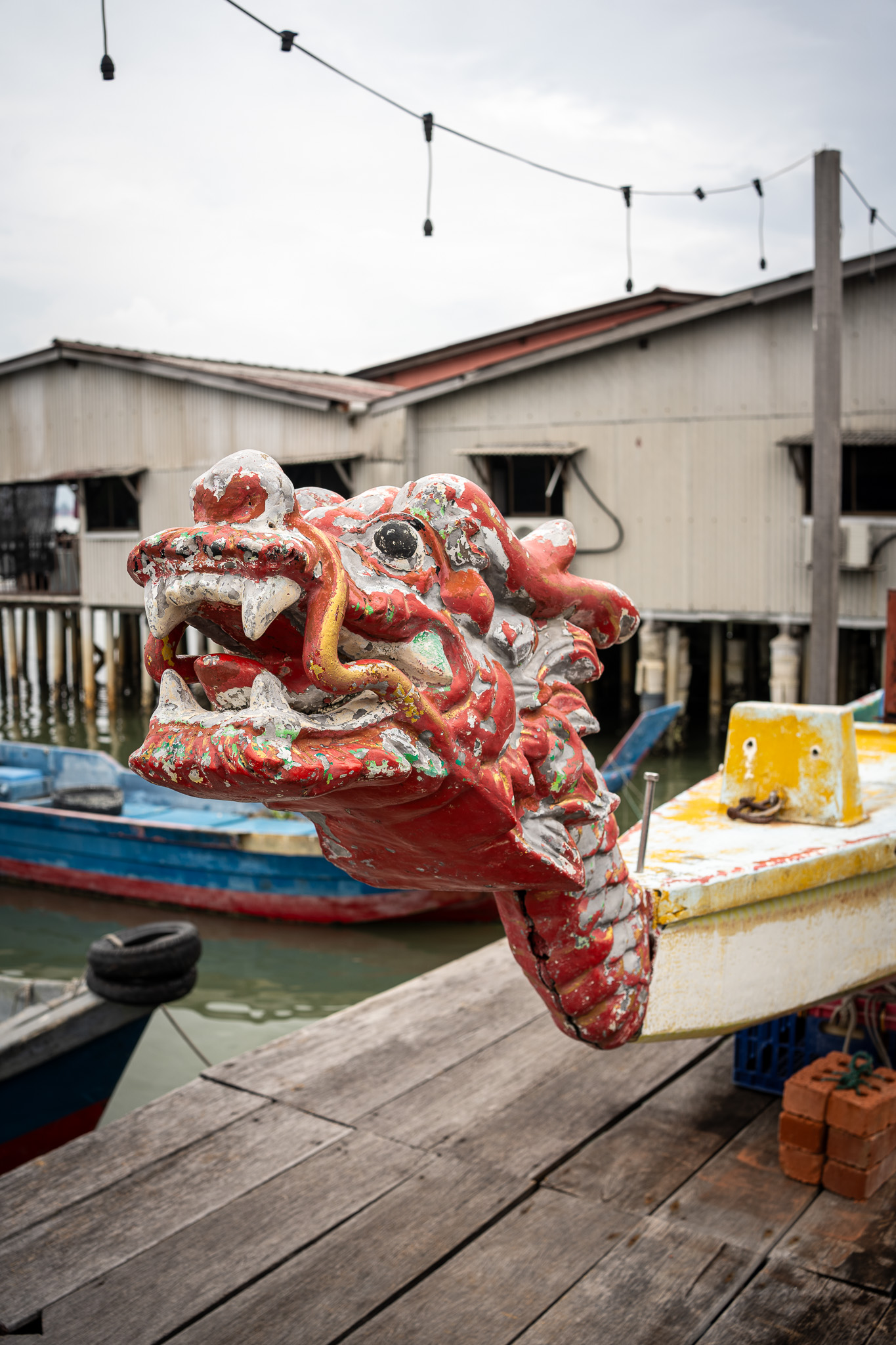
#7 Hin Bus Depot
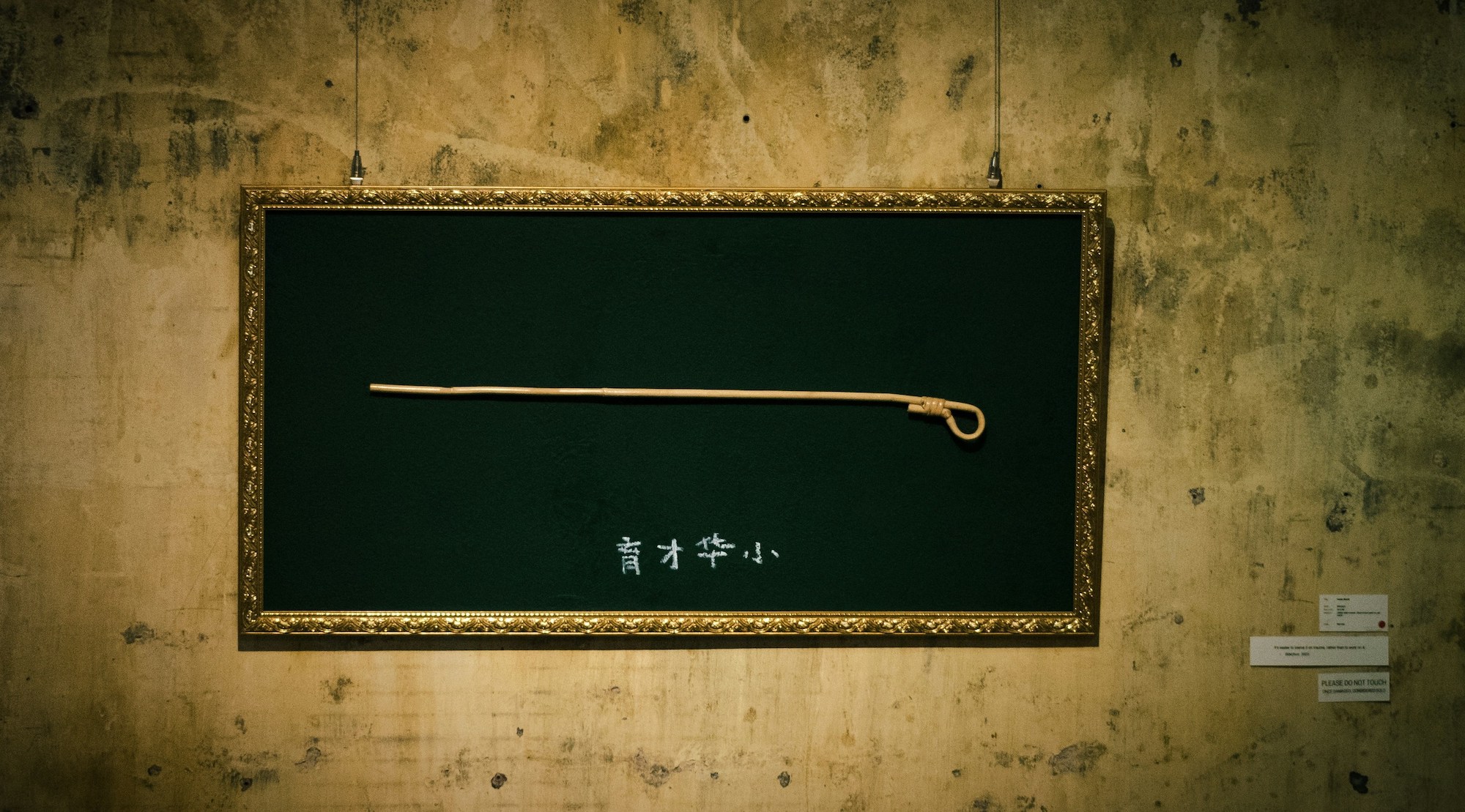
Georgetown’s Hin Bus Depot is a center for art and creativity in Penang. The depot houses exhibitions and hosts events.
It’s a great place to get inspired and learn about the history of art in Penang.
The Hin Bus Depot was founded by Ernest Zacharevic, a Lithuanian artist credited for bringing a thriving street art scene to Georgetown.
#8 Khoo Kongsi Clan House
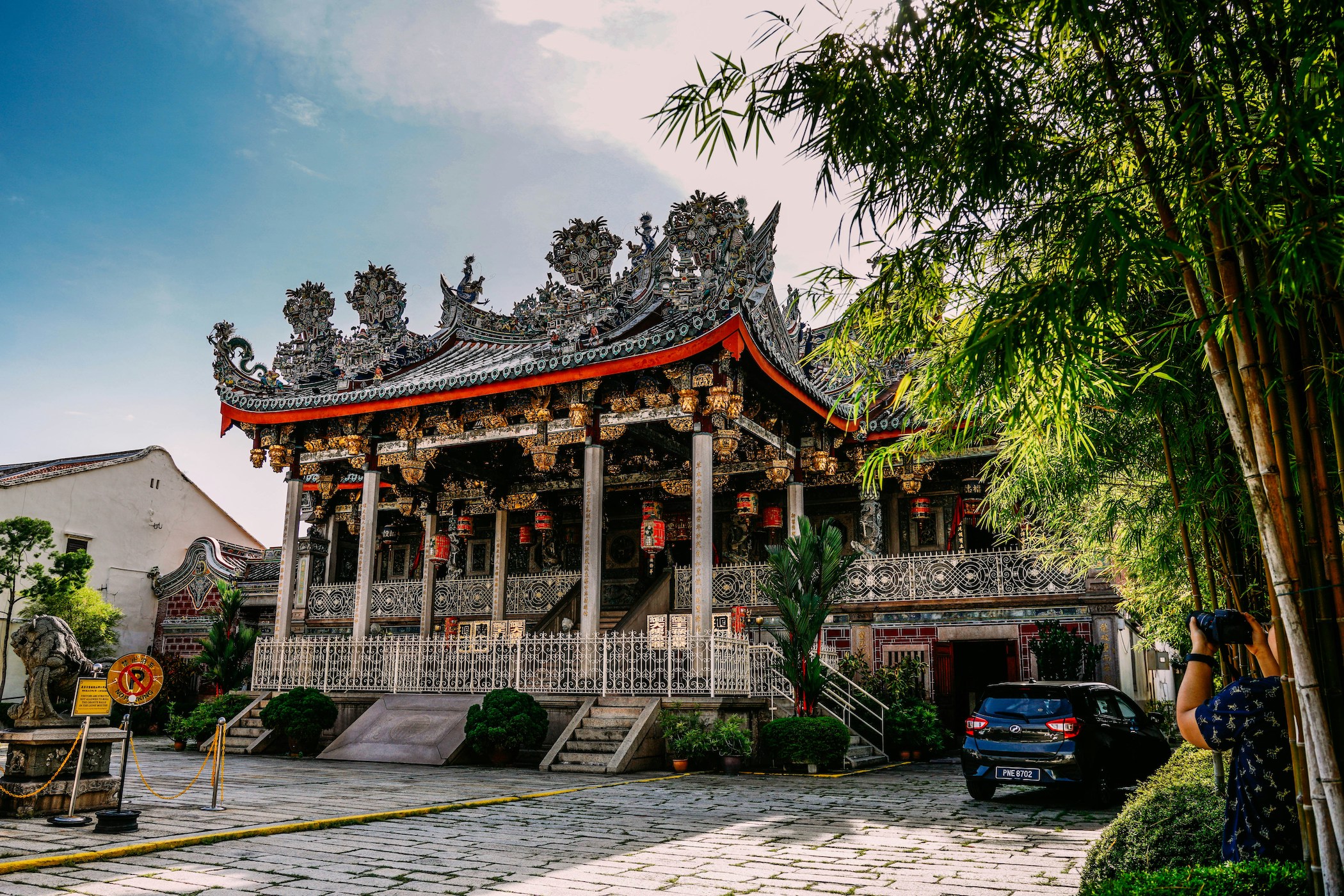
Khoo Kongsi (also known as Leong San Tong Khoo Kongsi) is the most famous example of a clan house in Southeast Asia.
It was constructed over six centuries ago and is Penang’s most famous kongsi (clan house). It’s often referred to as the Dragon Mountain Hall.
It was formerly a place of worship where members of Chinese clans came together to honor their ancestors.
Khoo Kongsi is very ornate and its most impressive features include the entrance hall’s stone carvings, decorative murals, ceramic sculptures, and over 35 guardian statues.
The structure is set on a square of granite and is lit within by glowing orange paper lanterns.
#9 China House
China House is a vibrant commercial complex comprised of three original buildings linked by one outdoor courtyard.
Today, China House is one of the key Georgetown attractions for numerous reasons.
It is home to an eclectic mix of vendors including a bakery, cafes, restaurants, shops, and galleries. Live music is often played here. There are also reading and kid-friendly areas.
#10 Colonial architecture and influences
The history of George Town in Penang is fascinating and in part down to the failure of the Portuguese who attempted to colonize it before the British arrived.
When first founded, it was known as Prince of Wales Island, although the capital was known as George Town from the start.
Due to its rich and varied history, Penang boasts several colonial-style buildings.
For me, the best examples include the Queen Victoria Memorial Clock Tower, the High Court, the Wisma Building, the Penang State Museum, the City Hall, the Georgetown Dispensary, Suffolk House, Anglican St George’s Church, and the Eastern and Oriental Hotel.
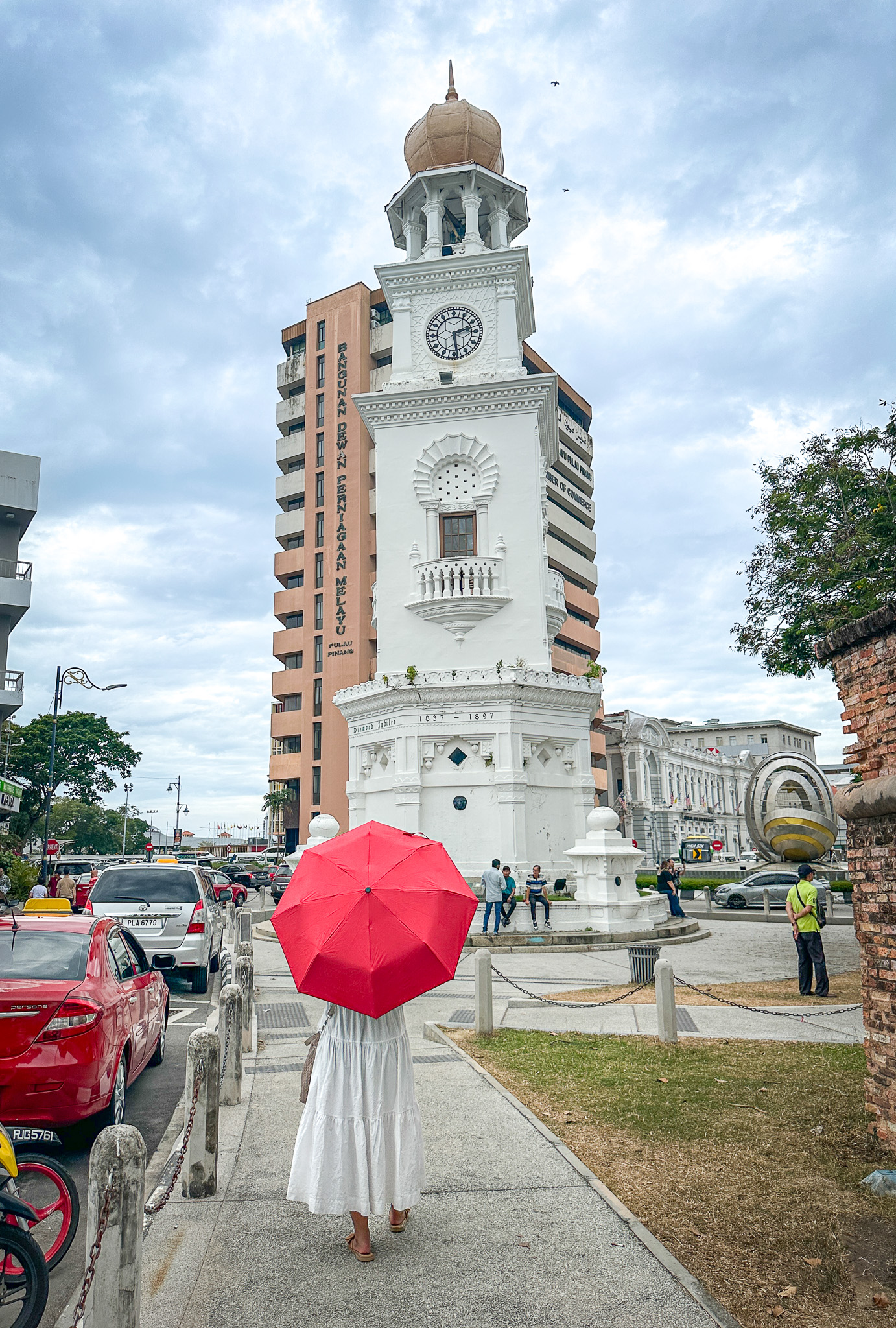
Queen Victoria Memorial Clock Tower
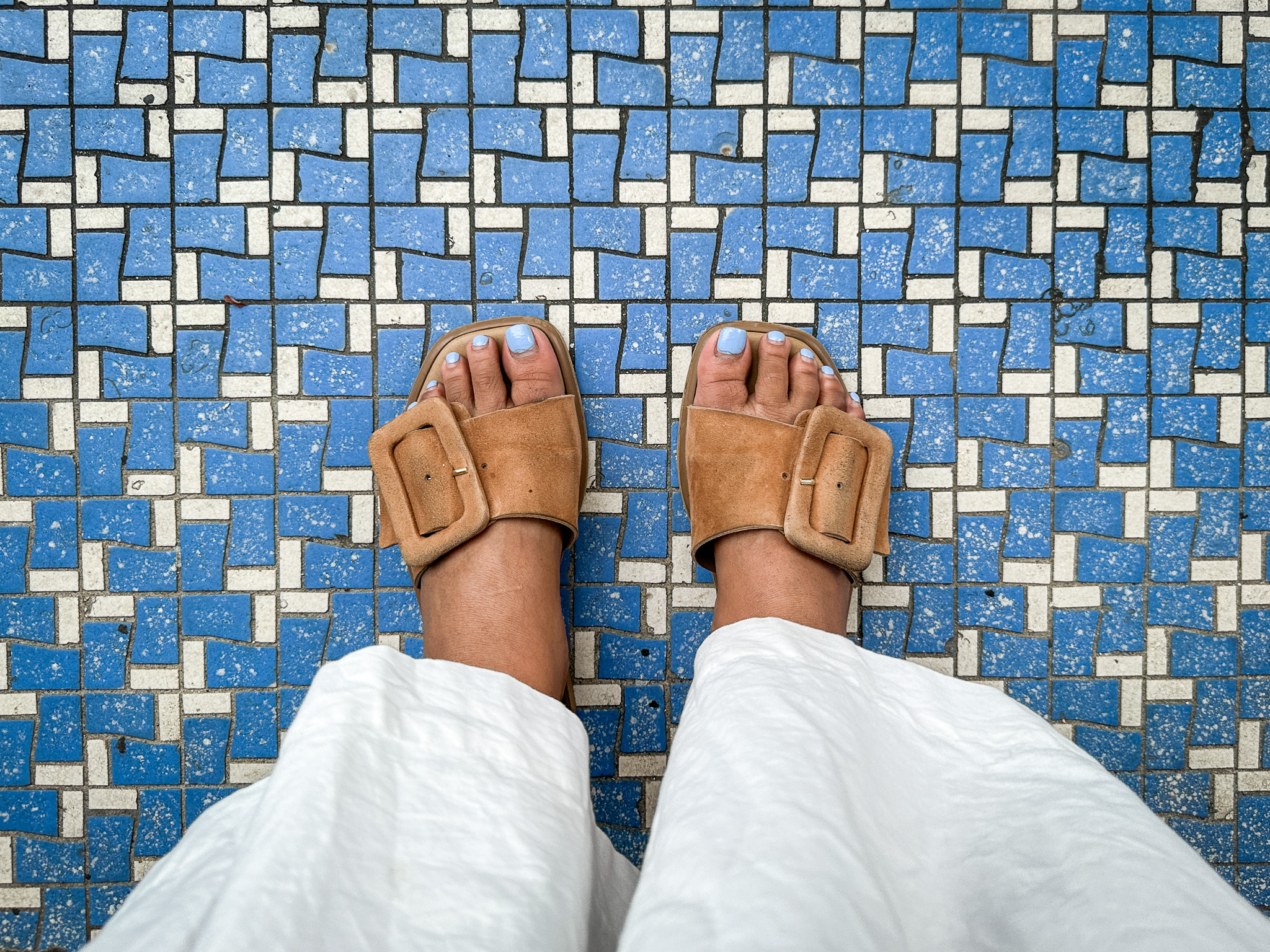
Colorful tile floors throughout Georgetown
Have you visited Georgetown or have any recommendations? Let me know in the comments or get in touch on social media!
If you found our Penang Georgetown Travel Guide helpful, please share it. Thanks for your support!
Thank you for visiting today! If you found this encouraging or informative, please connect with us on Instagram or TikTok.
Sign up for our monthly newsletter for updates and more. We promise we won't spam you! Feel free to unsubscribe anytime.
If you're a brand and want to work with us, please visit this page to get in touch.

